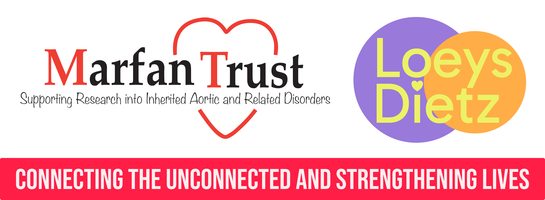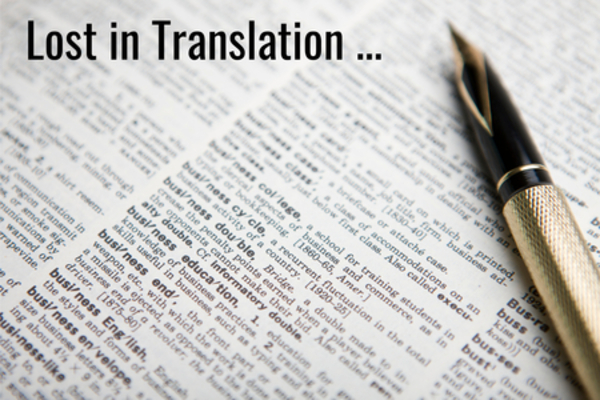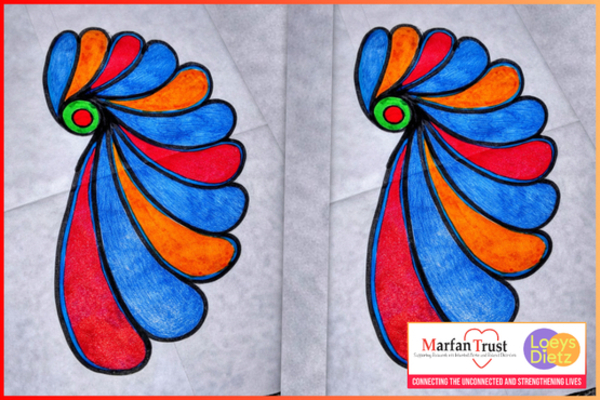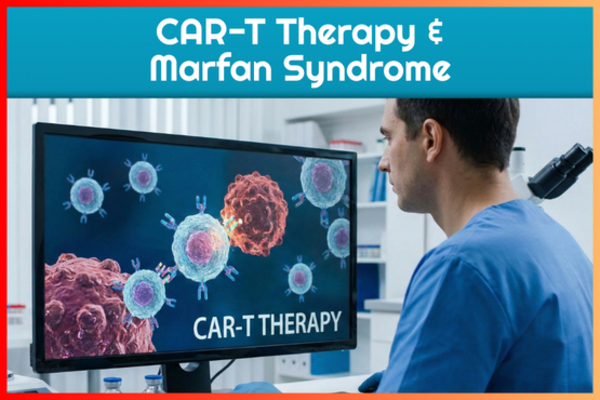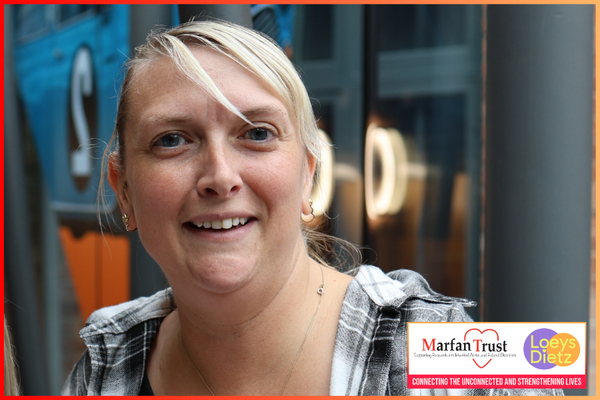Essential to awareness is understanding, and in today's Marfan Awareness Month (Our Search for the Missing 15,000) bulletin we introduce our Marfan encyclopaedia. Exclusive to our Marfan folk we hope it provides a demystifying one-stop glossary of Marfan medicalese.
Every vocation gives rise to its own vocabulary. Every job has its own jargon, every profession its own patois. Lockdown has unlocked its own lingo. Meanwhile, Marfan syndrome has a lexicon gathered from far and wide, covering the full medical and biological spectrum of eyes, heart and skeleton. As a layperson, navigating your way through this monolithic wall of medical terms can be alienating. We thought therefore in this article to elucidate, delineate and celebrate Marfan medicalise in a comprehensive list!
Please feel free to add anything we’ve missed and perhaps some made-up medicalese of your own?
Marfan Syndrome ….
Marfan: In 1896, Antoine Marfan described a hereditary disorder of connective tissue that was to become known as Marfan syndrome.
He wrote in the Bulletin of the Medical Society of Paris, of a five-year-old girl with arachnodactyly (sider fingers) who, ironically, is now believed not to have had Marfan syndrome.
Syndrome: a group of signs and symptoms which consistently occur together, or a condition characterized by a set of associated symptoms, which lead to a diagnosis.
Angiotensin Receptor Blocker (ARB)
Amblyopia an imbalance of vision where one eye sees better than the other. If not corrected, the brain may stop registering vision from the weaker eye.
Aneurysm a weakness in the arterial wall causing bulging and potentially rupture precipitating internal bleeding.
Anticoagulant a drug used to thin blood and prevent clotting.
Aorta the main artery that carries blood away from your heart to the rest of your body.
Aortic Root earliest part of the aorta as it leaves the heart; it contains the aortic valve.
Aortic Aneurysm the pressure of blood leaving your heart can cause the wall of the aorta to dilate or balloon. In people who have Marfan syndrome, this is most likely to happen at the aortic root — where the aorta leaves your heart.
Aortic Dilation enlargement of the aorta.
Aortic Dissection the wall of the aorta is made up of layers. Dissection occurs in MFS usually at the root when a small tear in the innermost layer of the aorta's wall allows blood to squeeze in between the inner and outer layers of the wall. This can cause severe pain in the chest or back. An aortic dissection weakens the vessel's structure and can result in a rupture, which may be fatal.
Aortic Regurgitation backward flow due to aortic dilation or weak aortic valve leaflets.
Aortic valve the valve in the heart between the left ventricle and the aorta.
Aortic valve insufficiency or aortic valve regurgitation: Abnormal function of the aortic valve that results in the leaking of blood from the aorta back into the left ventricle of the heart.
Arachnodactyly “spider fingers” fingers and toes are abnormally long and slender, in comparison to the palm of the hand and arch of the foot. Also, the individual's thumbs tend to be pulled inwards towards the palm.
Astigmatism blurred vision caused by an irregular curve of either the lens or the cornea.
Autosomal dominant a pattern of inheritance in which a gene is passed directly from a parent to a child with a 50/50 chance of inheritance.
Bicuspid aortic valve aortic valve that only has two flaps instead of the normal three.
Bradycardia a slower than normal heart rate.
Cardiologist a medical doctor who specializes in the heart and blood vessels.
Chromosome a structure found in the cell nucleus that contains genes; chromosomes are composed of DNA and are found as pairs in each cell. Each parent contributes one chromosome to each pair, so every child gets half of his/her chromosomes from the mother and half from the father.
Diagnosis determination of the nature of a disease.
DNA (deoxyribonucleic acid) a molecule used to make genes that tell our body how to grow and develop.
Dura the central nervous system – the brain and spinal cord – are surrounded by fluid contained in a membrane called the dura which is primarily made up of connective tissue.
Dural Ectasia the enlargement of the Dura (sometimes associated with the presence of cysts) is referred to as dural ectasia. It can cause radicular pain in the buttocks and legs; nerve root paralysis affecting bowel and bladder function and motor function in the legs; and dull, unremitting discomfort in the lower abdomen and pelvis. Occurs in 63–92% of people with Marfan syndrome. Dural ectasia may also occur in Ehlers-Danlos Syndrome, neurofibromatosis type I, ankylosing spondylitis, and trauma.
Ectopia Lentis dislocation of the crystalline lens of the eye.
Ehlers-Danlos Syndrome this group of inherited disorders affects connective tissues throughout the body, with symptoms most typically present in the joints, skin, and blood vessels
Endocarditis is inflammation of the heart's inner lining, called the endocardium. It's usually caused by bacteria.
Endocarditis prophylaxis the taking of antibiotics to prevent endocarditis prior to any procedure that is likely to release harmful bacteria into the blood stream.
Fibrillin-1 a protein fibre of the connective tissue. Mutations in the fibrillin-1 (FBN1) gene, on chromosome 15q21. 1, have been found to cause Marfan syndrome, a dominantly inherited disorder characterised by clinically variable skeletal, ocular, and cardiovascular abnormalities.
Gene a specific sequence of DNA located on a chromosome that creates a protein to perform a specific function in the body.
Geneticist a doctor who specialises in diagnosis and management of heritable conditions.
Genome the complete gene complement of an organism contained in the chromosomes.
Genotype the genetic makeup of a cell or individual.
Heritable a feature or condition which can be transmitted from parent to child.
Hernia protrusion of an organ or body part through a hole in the skin or connective tissue.
Holter Monitor a type of portable electrocardiogram (ECG). It records the electrical activity of the heart continuously over 24 hours or longer while you are away from the doctor's office.
Homograft human or pig tissue used to replace a damaged heart valve.
Homocystinuria a recessively inherited metabolic disorder that affects the body’s ability to properly process amino acids (the building blocks of proteins). This defect leads to disorders of the connective tissue, muscles, heart and blood vessels, and the central nervous system. Dislocated lenses can be a feature.
Kyphosis is a spinal disorder in which an excessive outward curve of the spine results in an abnormal rounding of the upper back. The condition is sometimes known as "roundback" or—in the case of a severe curve—as "hunchback”.
Magnetic Resonance Imaging (MRI) an imaging technique used to examine and take pictures of internal structures of the body.
Malocclusion poor positioning or inappropriate contact between teeth when the mouth is closed.
Marfanoid habitus a condition in which a person has the skeletal features of Marfan syndrome but doesn’t have any aortic or eye features.
MASS Phenotype a connective tissue disorder similar to Marfan syndrome; MASS stands for the Mitral valve, Aorta, Skin and Skeletal features of this disorder.
Metatarsalgia pain and tenderness in the forefoot.
Microfibril tiny microscopic rod-like structures composed of proteins, including fibrillin-1, that form the framework of the elastic fibers in connective tissue.
Mitochondria the “energy factory” of our body. Several thousand mitochondria are in nearly every cell in the body. Their job is to process oxygen and convert substances from the foods we eat into energy.
Mitral regurgitation the back flow of blood from the left ventricle to the left atrium of the heart through an abnormal mitral valve. Also know as mitral valve incompetence.
Mitral Valve a one-way heart valve with two cusps which is positioned between the left atrium and ventricle, which stops blood flowing the wrong way, positioned between the left atrium and ventricle.
Mutation a permanent structural change in DNA that can cause a condition.
Myocarditis inflammation of the heart muscle.
Pectus carinatum a rare chest wall deformity that causes the breastbone to push outward instead of being flush against the chest. It is also known as pigeon chest.
Pectus excavatum a condition in which a person's breastbone is depressed or concave in the chest. Severe cases of pectus excavatum can eventually interfere with the function of the heart and lungs.
Pericardium two thin layers of a sac-like tissue that surround the heart, hold it in place and help it work.
Pericarditis refers to inflammation of the pericardium.
Phenotype an individual's observable traits, such as body build, height, eye colour, and blood type. The genetic contribution to the phenotype is called the genotype.
Pneumothorax A pneumothorax occurs when air gets into the space between the outside of your lung and the inside of your chest wall, your ribcage. In MFS there are several respiratory manifestations, with spontaneous pneumothorax being common.
Protrusio Acetabuli is an uncommon defect of the acetabulum, the socket that receives the femoral head to make the hip joint. In Marfan syndrome the soft socket permits the head of the femur to protrude into the pelvic area.
Retina the thin layer of tissue that lines the back of the eye on the inside. It is located near the optic nerve. From it the optic nerve emerges to join the brain.
Scoliosis a side-to-side curvature of the spine with rotation.
Sinus of Valsalva aortic sinuses which are the anatomic spaces at the aortic root bounded internally by the aortic valve leaflets and externally by outward bulges of the aortic wall. In typical anatomy, there are three sinuses.
Spontaneous mutation a new permanent structural change in a gene that was not passed down from parent to child.
Sternum breastbone.
Strabismus deviation or misalignment of the eyes. Many people with Marfan syndrome have an outward deviation or turning of the eye (exotropia)
Striae stretch marks on the skin.
Thoracic Aortic the part of your aorta that travels through your chest (thorax) is called your thoracic aorta
Thoracic aortic aneurysm and dissection (TAAD) an enlargement of the aorta in the thoracic cavity (the chest area enclosed by the ribs and containing the lungs and the heart). If the aneurysm is not surgically repaired, it can lead to aortic dissection.
Valve-sparing surgery surgery that preserves (spares) a person’s own aortic valve while replacing the aorta close to the heart with a woven tube (usually made of Dacron). It is a possible alternative to the more commonly used composite graft repair in which the valve is also replaced.
Variable expression a range of features of any hereditary condition including the severity of the condition.
Vertebrae bones of the spine.
Vertebral artery major artery in the neck that carries blood from the heart toward the brain.
For February Awareness Month, we have launched a campaign to Our Search for The Missing 15,000.
